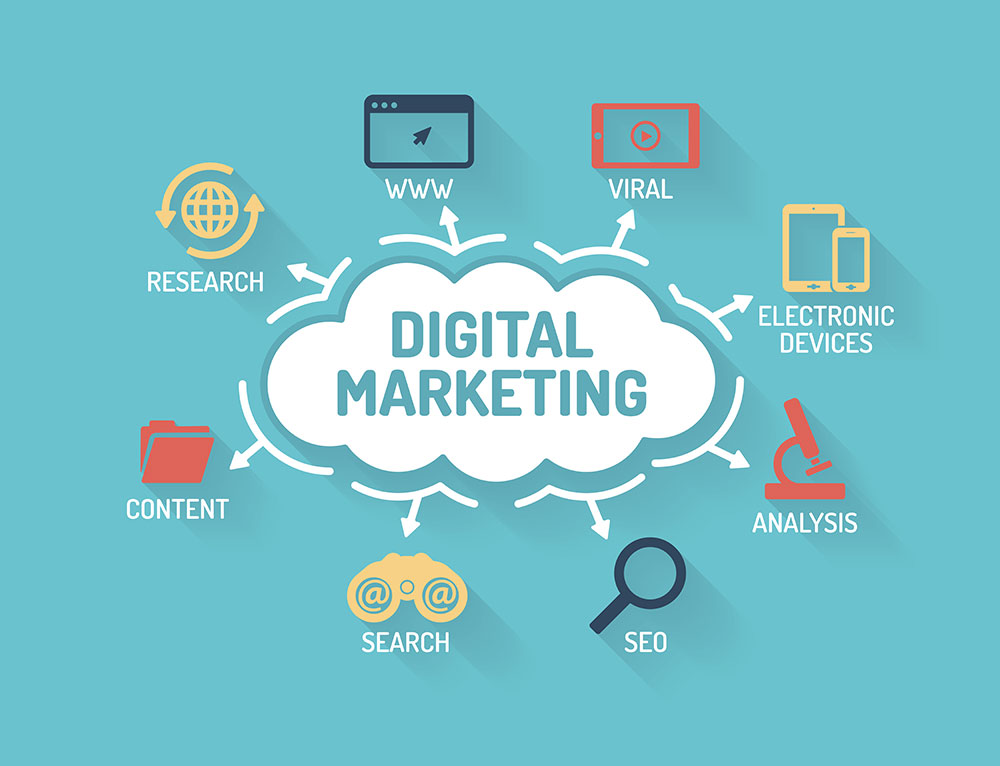
The e-commerce industry has evolved from being a convenient shopping alternative to an essential part of modern consumer life. With millions of online stores competing for attention, it’s no longer enough to simply list products and wait for sales. This is where digital marketing becomes the backbone of growth for e-commerce businesses. Digital marketing helps e-commerce brands build visibility, attract targeted traffic, convert visitors into buyers, and retain loyal customers.
In this blog, we’ll explore how e-commerce businesses use different digital marketing strategies to scale their growth effectively.
1. Search Engine Optimization (SEO): Boosting Organic Visibility
SEO is one of the most cost-effective digital marketing strategies for e-commerce businesses. Every time a customer searches for a product on Google, the brands appearing on the first page get the maximum clicks and sales.
E-commerce SEO includes:
- Keyword Research: Finding product-related keywords customers search for.
- On-Page Optimization: Optimizing product titles, descriptions, images, URLs, and meta tags.
- Technical SEO: Improving website speed, mobile responsiveness, structured data, and indexing.
- Content SEO: Writing blogs, guides, FAQs, and product comparison articles.
By ranking higher on search engines, e-commerce brands get organic traffic without spending on ads, which helps in long-term business growth.
2. Social Media Marketing: Building a Community & Brand Awareness
Social media platforms like Instagram, Facebook, Pinterest, and TikTok are essential for e-commerce growth. These platforms allow brands to connect with customers, showcase products creatively, and drive traffic to their website.
How e-commerce businesses use social media:
- Product Promotions and Launches through posts, stories, and reels.
- Influencer Marketing to reach a wider audience and build trust.
- Social Commerce where products are sold directly through platforms like Instagram Shop or Facebook Shop.
- User-Generated Content (UGC) such as customer reviews, unboxing videos, and photos.
Engaging content builds trust, encourages customer interaction, and creates a loyal online following.
3. Content Marketing: Educating and Engaging Customers
Content marketing helps e-commerce brands build authority and engage customers by providing valuable information rather than direct sales messages.
Types of content used:
- Blogs and articles (e.g., “Top 10 Gadgets for Students in 2025”)
- Buying guides and comparison posts
- Video tutorials and product demos
- Infographics and storytelling posts
High-quality content not only improves SEO ranking but also helps customers make informed buying decisions, leading to higher conversions.
4. Email Marketing: Personalization & Customer Retention
Email marketing is one of the highest ROI-generating strategies for e-commerce businesses. It helps in building long-term relationships with customers.
Types of email campaigns used:
- Welcome Emails after signup or first purchase
- Product Recommendations based on browsing and purchase history
- Abandoned Cart Emails to recover lost sales
- Discounts and Festive Offers
- Order Updates and Feedback Requests
With personalized emails and automated workflows, brands can increase repeat purchases and customer loyalty.
5. Pay-Per-Click Advertising (PPC): Instant Traffic and Sales
While SEO takes time, PPC advertising offers immediate visibility. Platforms like Google Ads, Facebook Ads, and Instagram Ads allow e-commerce brands to target specific audiences based on age, interests, behavior, and location.
Key PPC strategies:
- Google Shopping Ads for product visibility in search results
- Remarketing Ads to bring back visitors who didn’t buy
- Social Media Paid Ads to boost engagement and conversions
- Display Ads and Banner Advertising
PPC helps boost sales quickly and is especially effective during festive seasons, product launches, and special promotions.
6. Influencer & Affiliate Marketing: Trust-Based Promotion
Influencer and affiliate marketing are powerful tools for credibility and word-of-mouth promotion.
- Influencers promote products to their followers through reels, stories, and reviews.
- Affiliate Marketers earn a commission by promoting products on blogs, YouTube channels, or websites.
These strategies help e-commerce brands reach a larger audience with minimal initial investment and high trust value.
7. Conversion Rate Optimization (CRO): Turning Visitors into Buyers
Generating traffic is important, but converting that traffic into sales is the real goal. CRO helps optimize the shopping experience to increase sales.
CRO techniques include:
- A/B testing for product pages, CTA buttons, and layouts
- Fast-loading, mobile-friendly website design
- Clear product descriptions, reviews, and return policies
- Easy checkout process with multiple payment options
Even a small improvement in conversion rate can lead to a big increase in revenue.
8. Customer Reviews & Testimonials: Building Trust
Online shoppers usually check product reviews before purchasing. E-commerce websites encourage customers to leave feedback, ratings, and photos after delivery.
Positive reviews:
- Build trust and credibility
- Improve search rankings
- Boost conversions and reduce doubts
Brands often feature reviews on product pages, social media, and ads to enhance trustworthiness.
9. Analytics & Data-Driven Marketing
Digital marketing gives e-commerce businesses access to real-time analytics. Using tools like Google Analytics, Facebook Insights, and CRM systems, businesses track:
- Website visitors
- Conversion rates
- Customer behavior
- Best-selling products
- Return on ad spend (ROAS)
This data helps brands improve marketing strategies and make smarter business decisions.
Conclusion
Digital marketing is the engine that drives the growth of e-commerce businesses. From SEO and social media to email campaigns and paid ads, every strategy plays a vital role in attracting customers, boosting sales, and building brand loyalty. In a highly competitive online marketplace, businesses that invest in digital marketing not only survive but thrive.
If you’re an e-commerce brand looking to grow, now is the perfect time to embrace digital marketing and turn your online store into a successful business.

